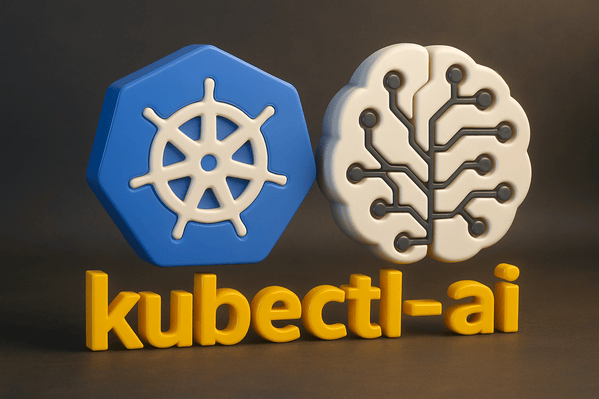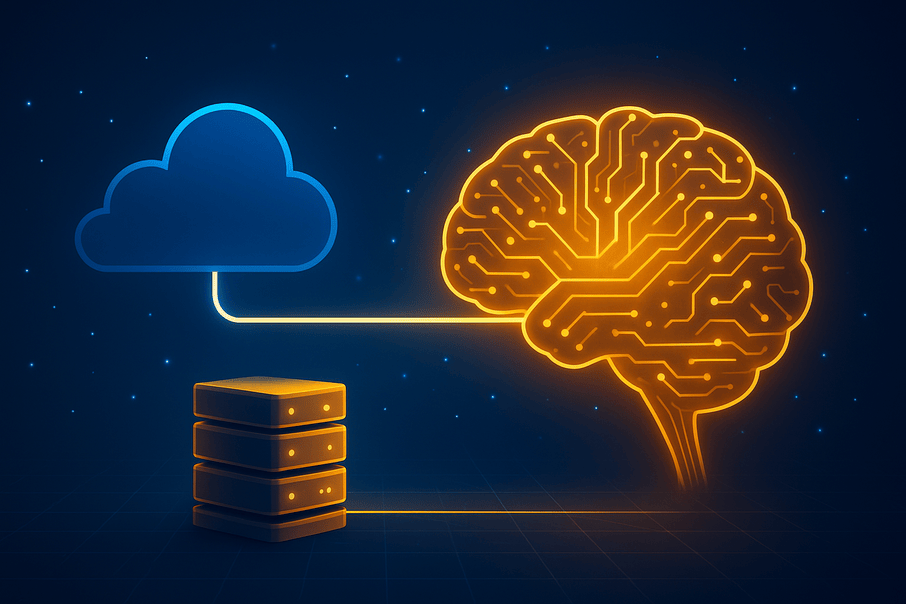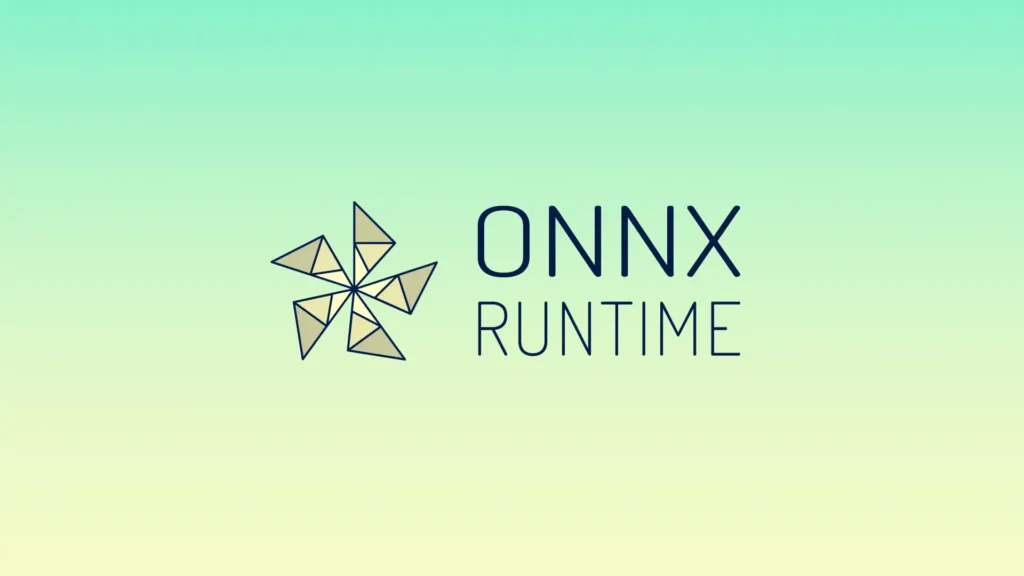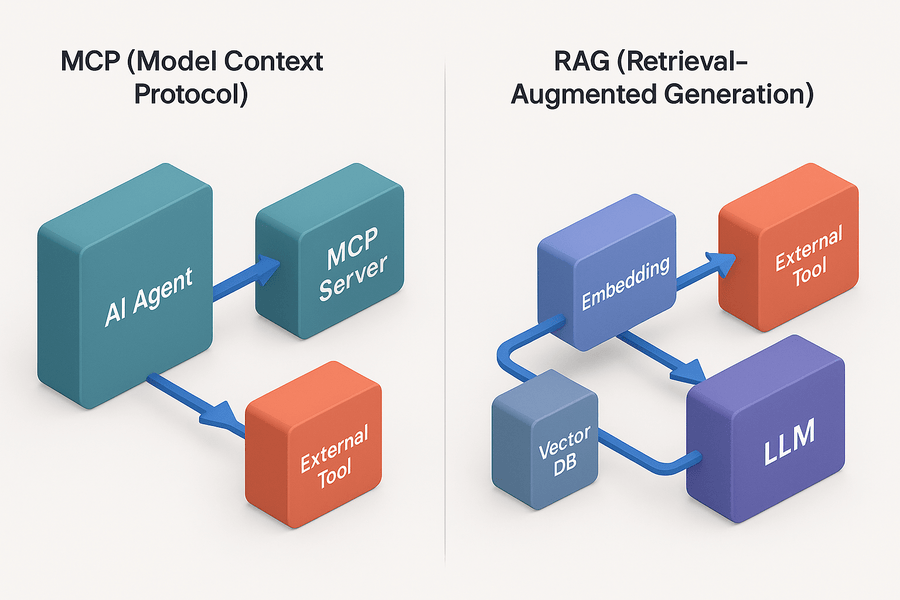As Kubernetes adoption continues to grow, so does the complexity of managing clusters, workloads, and resources. Enterkubectl-aia cutting-edge command-line tool that leverages the power of Large Language Models (LLMs) to translate natural language into executable Kubernetes commands. Designed to bridge the gap between human intent and Kubernetes operations, kubectl-ai makes cluster management more intuitive, efficient, and accessible, especially for beginners and productivity-focused DevOps engineers.
What is kubectl-ai?
kubectl-ai is a CLI plugin that serves as an intelligent interface between users and Kubernetes clusters. Instead of manually crafting kubectl commands, users can describe what they want to do in natural language. The tool then uses LLMs (like Gemini, OpenAI, Vertex AI, Grok, or local models via Ollama and LLaMA.cpp) to interpret the request and execute the corresponding action.
For example:
This single sentence would yield insights on the status of an Nginx deployment across the Kubernetes cluster.
Benefits of Using kubectl-ai
1. Natural Language Interface
No more memorizing verbose commands. Users can interact with the cluster using natural language queries.
2. Multi-Model Support
Compatible with popular LLM providers like:
-
Google Gemini
-
OpenAI (ChatGPT)
-
Azure OpenAI
-
Grok
-
Local models (Ollama, llama.cpp)
3. Interactive Mode
Users can enter a chat-like shell to run a sequence of tasks while maintaining context:
Extend functionality with custom tool definitions (e.g., Helm, Bash, Trivy) via ~/.config/kubectl-ai/tools.yaml.
5. Model Context Protocol (MCP)
Supports both client and server MCP modes for richer context integration with other AI tools like Claude, Cursor, and VS Code.
6. Pipeline Friendly
Can ingest input via stdin, files, or be part of a script:
Limitations of Using kubectl-ai
Model Dependency: One of the key limitations of it kubectl-ai is its model dependency—the accuracy and quality of responses are directly tied to the capabilities of the selected Large Language Model (LLM). If a weaker or less specialized model is used, it may misinterpret user queries, generate incorrect Kubernetes commands, or provide incomplete explanations. This makes it essential to choose a reliable and well-trained LLM, especially when working in production environments where precision and correctness are critical. As the underlying model improves, so does the effectiveness of kubectl-ai.
Security Risks: A significant concern when using kubectl-ai is the potential for security risks, particularly if the tool is misconfigured or overly permissive. Since it translates natural language into real kubectl commands and can execute them directly on your cluster, there’s a chance it might perform unintended or even destructive actions, such as deleting resources, exposing sensitive data, or scaling down critical workloads. This risk is heightened if users blindly trust the AI’s suggestions without review, or if the tool is integrated into CI/CD pipelines with elevated privileges. To mitigate this, it’s crucial to enforce role-based access control (RBAC), restrict command execution where appropriate, and thoroughly audit the tool’s output before applying changes to production environments.
Latency: Another potential drawback of using kubectl-ai is latency, as response times can vary based on the selected LLM and the speed of your internet connection. Cloud-based models like OpenAI or Gemini require sending queries over the network, which introduces delay, especially in regions with slower connectivity or when the AI provider experiences high demand. Additionally, larger and more complex models may take longer to process requests and generate responses. This can impact productivity in scenarios where quick, real-time feedback is needed. For latency-sensitive environments, opting for smaller models or local LLMs via tools like Ollama may help reduce delays.
Limited Offline Use: A notable limitation of It kubectl-ai is its restricted offline usability. Most supported LLMs—such as those from OpenAI, Google Gemini, or Azure—rely on cloud APIs, which require a stable internet connection to function. This makes the tool unusable in disconnected or air-gapped environments. While local models like those supported through Ollama or llama.cpp offers an offline alternative; they demand additional setup, including hardware resources, model downloads, and configuration. For users working in secure or isolated environments, this adds complexity and may limit the practical adoption kubectl-ai unless local inference is properly planned and provisioned.
How to Install kubectl-ai
Prerequisite
Ensure kubectl is installed and configured.
Quick Install (Linux & macOS)
Manual or Custom Installation
Refer to the GitHub repo for advanced installation options and Windows support.
Configuration & Setup
To use kubectl-ai, it needs to be plugged into an LLM running locally. The following steps shows how to configure kubectl-ai with different LLMs:
Using Gemini (Default)
Use a Different Model
Configure Custom Tools
Enable MCP Client Mode
Edit the config at ~/.config/kubectl-ai/mcp.yaml.
Run as a Plugin
Make sure kubectl-ai Is in your PATH With the naming format kubectl-ai.
How to Use kubectl-ai
You can run different commands on kubectl-ai that are human-friendly instead of needing to Google a particular command or keep it in your head. All you need to do is prompt with kubectl-ai, and the command is generated for you. Here are examples of some commands and operations that can be performed via kubectl-ai.
Run with a Natural Language Query
Use with Logs or Files
These are some other built-in commands that can be used with kubectl-ai, and what they mean
-
kubectl-ai tools– list available tools -
kubectl-ai models– list available models -
kubectl-ai version– show current version -
kubectl-ai reset– clear session memory
Real-World Use Cases
Here are some real-world scenarios where it kubectl-ai proves incredibly valuable. For troubleshooting, engineers can use natural language to quickly diagnose issues, such as running kubectl-ai "why is my redis pod restarting continuously?" to get actionable insights into pod failures, crash loops, or resource issues, without needing to dig into logs manually. In the context of security audits, it can be leveraged to automate vulnerability scanning using tools like Trivy, for instance: kubectl-ai "scan all pods with Trivy for vulnerabilities", enabling proactive detection of security risks across workloads. For daily cluster checks, it kubectl-ai simplifies routine monitoring tasks; a command like this kubectl-ai "list all failed pods in all namespaces" can immediately surface health issues across your Kubernetes environment. Additionally, in CI/CD pipelines, kubectl-ai can be integrated into GitHub Actions or GitLab CI workflows to validate deployments, monitor rollout progress, or troubleshoot failed builds using intuitive language-based queries—bringing AI-driven observability and automation to your continuous delivery lifecycle.
Final Thoughts
kubectl-ai is a powerful example of how AI can streamline DevOps workflows. It transforms the way developers and SREs interact with Kubernetes, reducing learning curves and enabling faster debugging and administration. While it’s not a silver bullet and should be used cautiously (especially in production), its potential for automation and simplicity is undeniable.
Whether you’re an experienced cluster admin or a beginner trying to get things done, kubectl-ai might just become your new best friend in the terminal.
Official Git Repo: https://github.com/GoogleCloudPlatform/kubectl-ai





